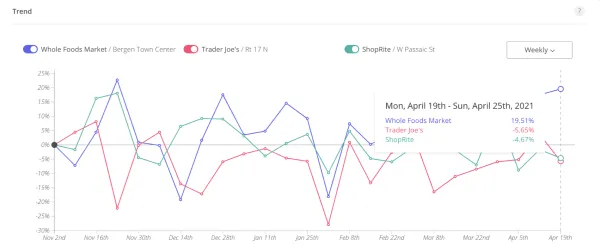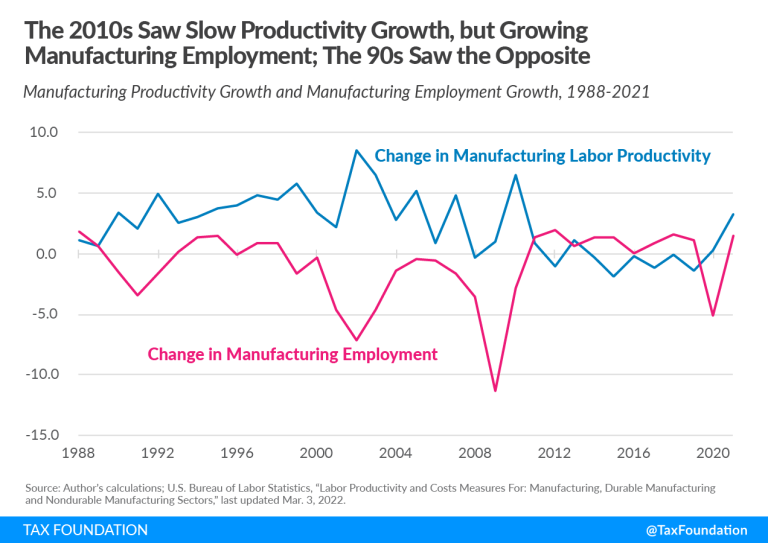Michigan Manufacturing Community in Transition as Inline Plastics Closes Plant


The Digital Gatekeeper: A Perspective on Online Verification and Security
In today’s fast-paced online ecosystem, the message “Verifying you are human” might seem like a minor inconvenience. However, this brief interaction represents a broader shift in how businesses protect their operations against automated threats, cyber attacks, and fraudulent behavior. As we see technology advance and the competitive business landscape grow increasingly digital, this process is both a symbolic and practical embodiment of the tensions in modern commerce––whether you’re a small business owner, an industrial manufacturer, an automotive executive, or an electric vehicles innovator.
Dissecting the Security Curtain: What Cloudflare’s Verification Means for Business
The simple message about verifying human status may appear trivial. But when we take a closer look at it, we find that it encapsulates the essential role of digital security. This security checkpoint by Cloudflare is one small part of a much larger effort to secure sensitive business data and ensure trust in online transactions. For any organization relying on internet-based operations, this process is a key piece in a puzzle filled with tricky parts and tangled issues.
Understanding the Verification Process
When you see a message from Cloudflare stating “Verifying you are human,” it serves as a protective buffer designed to sift through automated bots and malicious traffic. Behind the scenes, sophisticated algorithms review the performance of your connection and assess whether it conforms to expected behavior. This type of verification might seem obvious, but it is loaded with hidden complexities that affect web performance, user experience, and ultimately business reputation.
- Automatic filtering of suspicious network activity
- Ensuring that genuine users experience a smooth online session
- Safeguarding digital assets against a barrage of automated script-based attacks
For many small businesses and e-commerce platforms, these verification measures serve as an essential shield between their online presence and the ever-present risk of cyber threats. A secure website not only defends the business but also builds customer trust.
Security at a Glance: A Look into the Cloudflare System
Cloudflare’s systems are known for their robustness in fighting off cyber threats. The mix of performance and security that Cloudflare provides is super important in a marketplace where speed and safety go hand in hand. The following table summarizes the core features that make platforms like Cloudflare indispensable in today’s digital age:
| Feature | Description | Business Impact |
|---|---|---|
| Bot Mitigation | Automated traffic filtering that discerns between humans and bots. | Prevents fraud and maintains website integrity. |
| DDoS Protection | Preemptive interception of distributed denial-of-service attacks. | Keeps online assets accessible during high-traffic attacks. |
| Performance Optimization | Content Delivery Network (CDN) that speeds up website loading times. | Enhances user experience, increasing engagement and sales. |
| SSL Encryption | Secures data transfers to protect sensitive information. | Essential for building customer trust and legal compliance. |
While these systems work diligently behind the scenes, understanding them helps business leaders figure a path to stronger online defenses and assures stakeholders that security isn’t an afterthought.
Small Business and the Digital Frontier: Balancing Security and Usability
The challenge for many small business owners lies in balancing the need for robust online security with an effortless user experience. A security layer that is too thick might repel potential customers, while one that is too lenient could lead to data breaches or fraud. This is a nerve-racking balancing act, full of problems that require constant adjustment as threats evolve.
Striking the Right Balance
One of the key objectives for businesses is ensuring that their online measures do not disrupt the customer journey. It’s an off-putting situation when users encounter excessive delays or complications while trying to access a service. Thus, many companies have had to reexamine their security protocols, ensuring that they are tough enough to deter unwanted intrusions but flexible enough to keep genuine customers happy.
Key factors in this balancing act include:
- User Experience: Minimizing delays associated with security checks while maintaining a safe environment.
- Operational Efficiency: Monitoring interactions to fine-tune the screening process.
- Customer Trust: Communicating the importance of security measures without causing alarm.
The ideal approach is to use subtle details in the design of the user experience that do not disrupt but instead enhance trust and ease of access. In other words, working through these fine points is essential when considering how to secure a small business website or an online storefront.
The Role of Advanced Analytics
Modern security platforms often incorporate advanced analytics and machine learning. These tools play a critical role in identifying suspicious patterns without overburdening the end user. By mining through streams of data, systems can quickly adapt to new threats, a capability that is super important for small businesses that might not have the resources for constant manual oversight.
Some benefits of incorporating advanced analytics include:
- Real-Time Threat Prediction: Proactive measures can be taken before potential breaches occur.
- Customer Behavior Analysis: This helps in distinguishing normal user activities from suspicious behavior patterns.
- Continuous Learning: The system evolves over time, better identifying and countering future threats.
For small businesses, leveraging these technologies can be a game-changer––allowing them to focus on growth and customer engagement while the system quietly ensures their digital environment is safeguarded.
Industrial Manufacturing and Automotive Sectors: Ensuring Digital Reliability
Manufacturing and automotive industries have rapidly grown to rely on digital and online systems for everything from operational management to customer service. The verification processes that ensure human interaction are not only about protecting customer data but also about maintaining the integrity of entire supply chains.
Industrial Safety in a Digital World
For manufacturers, any breach or disruption in digital communications can lead to severe consequences, including operational shutdowns or compromised product quality. Thus, implementing secure online verification measures is a key component of modern industrial safety protocols. Many companies rely on technologies such as Cloudflare to secure their communication channels, ensuring that remote operations and automated systems are both trusted and resilient.
A few points to consider regarding digital safety in industrial manufacturing include:
- Supply Chain Security: Ensuring that all digital interactions between suppliers and manufacturers are verified prevents unauthorized access.
- Remote Monitoring: Secure systems allow for real-time monitoring of production lines without risking data or equipment safety.
- Automation Integrity: Many factories depend on automated systems for operational efficiency, which must be safeguarded against cyber threats.
In the automotive sector, these challenges are compounded by the need for reliable communications among not only internal networks but also between vehicles in increasingly connected environments. System errors or breaches can potentially compromise critical safety features in vehicles––a situation that is both intimidating and full of problems.
Electric Vehicles and the Future of Connected Mobility
The growth of electric vehicles (EVs) represents a major shift in how we think about mobility. EV manufacturers are not solely focused on the physical product, but also on the digital infrastructure that supports it. This digital infrastructure includes everything from charging station management to over-the-air updates, all of which require robust security protocols.
The key digital considerations for the EV sector include:
- Data Integrity: Ensuring that updates transmitted over the air are authentic and have not been corrupted by cyber interference.
- Communication Networks: Establishing secure channels between vehicles, charging stations, and central management hubs is crucial.
- User Experience: Car owners expect seamless, secure interaction with their vehicles’ digital systems without encountering intimidating delays.
These factors highlight the need for comprehensive security measures that incorporate both advanced technology and user-centric design. By doing so, companies can protect their investments while also ensuring that consumers feel safe and confident in the digital aspects of their vehicles.
Business Tax Laws, Economic News, and the Digital Marketplace
The world of business tax laws continues to change as governments adapt to an increasingly digital economy. Online interactions—secured by systems like Cloudflare’s verification—play a central role in modern commerce, influencing not only business operations but also regulatory policies and economic trends.
Implications of Digital Verification on Business Tax Regulations
Business tax laws are evolving along with new digital practices. For instance, governments are beginning to pay closer attention to digital transactions, and ensuring that these transactions are secure and authenticated is critical. Digital verification processes help to:
- Increase Transparency: Secure systems enable accurate tracking of transactions, which is a key component of fair tax practices.
- Prevent Fraudulent Claims: Verifying user identity can reduce instances of tax evasion or fraudulent expense claims.
- Support Regulatory Oversight: Digitally secured records facilitate easier auditing and regulatory compliance.
This is particularly important for small businesses that may not have the administrative capacity to manage tangled issues related to compliance on their own. By relying on digital systems that standardize verification and data tracking, these enterprises can better manage their tax obligations with fewer complications. The process of steering through these ever-changing legal landscapes requires a keen understanding of both technology and regulatory requirements.
The Economic Ripple Effect of Digital Security Measures
On a macroeconomic level, the widespread adoption of stringent security protocols impacts overall economic stability and growth. When businesses, regardless of size, have confidence in online systems, they are more likely to invest in digital tools, scale their operations, and explore new markets with reduced fear of cyber threats. This trust contributes to economic growth and innovation by:
- Encouraging Investment: Secure and reliable systems attract investors who look for stability and predictability.
- Boosting Consumer Confidence: When customers know their data is safe, they are more inclined to engage in digital commerce.
- Expanding Market Opportunities: Global commerce benefits from uniform security standards that bridge geographic and regulatory differences.
The economic narratives emerging from these digital frontlines underscore the interconnectedness of technology, regulatory frameworks, and market dynamics. The deployment of robust verification measures is not merely an IT concern––it is a broader economic development strategy that reinforces confidence in the digital marketplace.
Marketing Strategies in the Age of Advanced Digital Verification
Marketing in today’s digitally secure universe is evolving as companies strive to present themselves as both innovative and trustworthy. Advanced verification systems—despite their occasional off-putting moments—play a key role in shaping a brand’s image. Consumers appreciate brands that prioritize their security, and savvy marketers are quick to communicate this advantage in a variety of creative ways.
Leveraging Security as a Brand Differentiator
Brands that successfully integrate advanced digital verification into their operations often use this quality as a unique selling point. Here are some tactics businesses employ:
- Transparency in Security Practices: Sharing information about security measures can reassure customers that their data is safe.
- User Education: Informing users about how verification measures work helps demystify the process and reduce any potential stress during interactions.
- Emphasizing Speed and Performance: Highlighting the efficiency of these systems can help reinforce the connection between security and a seamless user experience.
Marketing strategies that underscore these points not only improve customer retention but also attract new clients who value security and innovation. The key is to explain the subtle details of the verification process in language that is both accessible and reassuring.
Creative Messaging and Consumer Trust
Another critical area for marketers is ensuring that their messaging does not inadvertently create anxiety around security checks. Business communications can achieve this balance by:
- Simplifying Technical Jargon: Use everyday language to explain why security measures are in place without overwhelming the customer.
- Emphasizing Benefits Over Complexity: Focus on how these protective steps result in a safer, more reliable service experience.
- Visual Communication: Incorporate infographics and short videos to visualize the process, turning potential concerns into positive brand attributes.
Through strategic storytelling that weaves in the notion of digital trust, companies are able to foster stronger relationships with their customers. This type of messaging is particularly effective in sectors such as automotive and electric vehicles, where safety and reliability are paramount. Brands that articulate their security measures in a friendly and confident tone lay the groundwork for a trustworthy and enduring relationship with their market.
The Convergence of Technology, Business, and Policy
As we take a closer look at the broader landscape, it is clear that the transition to a digitized world is not limited to a single sector. It touches upon many aspects of modern life, from the tax laws governing enterprises to the economic policies that steer market development. This convergence of technology, business, and policy is creating a new paradigm that demands innovative solutions and coordinated responses.
Bridging the Gap Between Regulation and Innovation
Regulatory bodies around the world are striving to keep pace with rapid technological advancements. The digital verification measures used by companies today are not merely reactive solutions but are part of a proactive effort to create a secure digital economy. To achieve this, businesses and policymakers must work together to:
- Craft clear guidelines for secure online transactions.
- Adopt flexible policy frameworks that can keep up with technology.
- Invest in public-private partnerships that foster innovation while maintaining safety.
This cooperative approach is essential to managing the small twists and subtle details of a digital environment that is constantly evolving. When regulatory techniques and innovative practices align, the result is an ecosystem that supports growth, protects consumers, and drives economic progress.
How Policy Adaptation Drives Business Development
Businesses that stay ahead of the curve often invest in security infrastructure and collaborate with industry bodies to help shape new standards. In return, regulatory bodies benefit from industry insights that enable more effective oversight. This symbiotic relationship can have far-reaching impacts:
| Impact Area | Outcome |
|---|---|
| Innovation | Increased research and development in cybersecurity and automation. |
| Consumer Confidence | A more reliable online environment that encourages digital transactions. |
| Market Growth | Access to broader markets through standardized security protocols. |
| International Trade | Improved cross-border commerce driven by mutual trust in digital systems. |
With these developments, it becomes clear that online security and verification extend far beyond the realm of tech support—they directly influence business strategy, market behavior, and the overall health of the economy.
Taking the Wheel: Strategies for Future-Ready Online Security
As we steer through the twists and turns of an ever-evolving digital landscape, business leaders must consider how to integrate robust security measures without alienating their users. The conversation around digital verification will continue to evolve, driven by new technologies, shifting market demands, and updated regulatory standards.
Building a Culture of Continuous Improvement
An effective digital security strategy isn’t implemented overnight. Instead, it requires ongoing effort and periodic reviews to ensure that it remains relevant in the face of emerging threats. Companies can take several steps to build and maintain a culture of continuous security improvement:
- Regular Audits: Assess the current security protocols and update them based on new threat intelligence.
- User Feedback: Engage customers to understand their experience with security measures and find ways to improve usability.
- Training and Development: Keep staff updated on current trends in cybersecurity and practical ways to respond to threats.
- Collaboration with Experts: Partner with cybersecurity firms to benefit from external expertise and independent assessments.
By consistently reviewing and refining security practices, businesses can ensure that they are not only prepared for the challenges of today but also equipped to face the uncertainties of tomorrow.
Embracing Technological Innovation
The rapid pace of technological change means that companies must be prepared to adopt new tools and methodologies to stay secure. Innovations such as artificial intelligence, machine learning, and blockchain technology are beginning to play a significant role in fortifying online security.
Some promising future trends include:
- AI-Driven Threat Detection: Advanced algorithms can predict and block suspicious behavior almost instantaneously.
- Decentralized Security Protocols: Blockchain and other decentralized systems provide an alternative to traditional, centralized models.
- Adaptive Authentication: Systems that intelligently adjust the level of verification based on perceived risk, offering a smoother experience for trusted users.
These technologies have the potential to further streamline the verification process, reducing the off-putting aspects of security checks while enhancing overall protection. As these tools become more integrated into everyday operations, the opportunity to build a future in which security and usability coexist seamlessly will only grow stronger.
Conclusion: Forging a Future of Secure Business Innovation
The modest phrase “Verifying you are human” is more than just a roadblock on your way to a website. It is a marker of our era’s commitment to secure, reliable digital business environments. As we have seen, from safeguarding small businesses to protecting industrial manufacturing and automotive operations, and even fortifying the emerging field of electric vehicles, robust online security is a cornerstone of modern commerce.
While the process may involve some intimidating, confusing bits and nerve-racking checks, they are a necessary investment in trust and stability. By embracing advanced verification systems and integrating them with continuous improvement and innovation, businesses of all sizes can confidently work through tangled issues and subtle details to provide secure, efficient, and user-friendly services.
Looking ahead, it is clear that forging a future where technology, business, and regulation are in harmony will require proactive effort and creative strategies. Whether you are managing a boutique e-commerce site or overseeing the production lines of a global manufacturer, ensuring digital security is no longer optional—it is a must-have element of your business strategy.
In this rapidly changing digital landscape, every company must prepare to take the wheel when it comes to online security. By understanding and leveraging the tools at your disposal, educating your team, and collaborating with industry experts, you can steer through the twists and turns ahead. With trust as a foundation, the path to digital innovation is both promising and secure, empowering businesses to meet the challenges of today and seize the opportunities of tomorrow.
Originally Post From https://www.plasticstoday.com/packaging/inline-plastics-to-close-michigan-manufacturing-plant-in-january-eliminating-25-jobs-in-consolidation
Read more about this topic at
Human Verification: Works Invisibly — No Captchas, or ID, …
Human verification — checking you’re a human when you …



